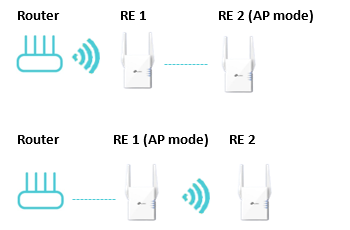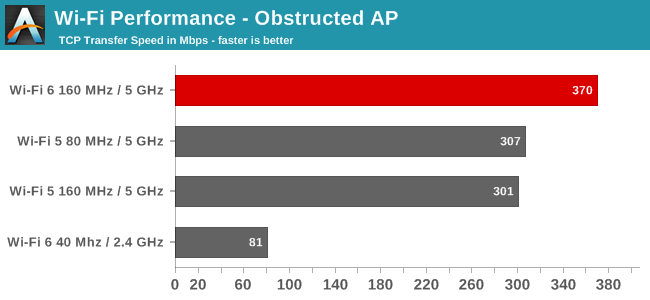What Are The Challenges Of Wearable Technology?
Wearable technology has been an exciting development in the technology industry, allowing us to access technology in a more convenient and discreet manner. However, this technology does come with its own set of challenges. These challenges range from privacy and security issues to reliability and usability. In this article, we will discuss some of the most common challenges that come with wearable technology. We will also discuss how to address these challenges to ensure the success of the technology.
Definition of Wearable Technology
Wearable technology refers to electronic devices or accessories that are designed to be worn by individuals and are capable of connecting to the internet. Wearable technology encompasses a wide range of devices, including fitness trackers, smartwatches, virtual reality headsets, and clothing. In recent years, the popularity of wearables has grown exponentially, with the market for such products expected to exceed $50 billion by 2022.
Given the potential for wearables to revolutionize how we interact with technology, it’s no surprise that the industry is booming. However, there are several challenges that must be addressed in order for wearables to reach their full potential. These include device security, user privacy, battery life, and device compatibility.
Device security is a major concern for wearable technology. As more and more of our data becomes digitized and stored on wearable devices, it becomes increasingly important to protect it from malicious actors. Companies must ensure that their devices are equipped with strong encryption and authentication protocols.
User privacy is another key challenge for wearables. Wearable devices have the potential to collect vast amounts of data about users, which could be used to tailor ads or even sell data to third parties. Companies must ensure that their devices are designed with privacy in mind and that they provide users with clear, understandable privacy policies.
Finally, battery life and device compatibility are two major issues that must be addressed in order for wearables to be successful. Wearables are designed to be used for extended periods of time, and as such, must have long battery life. Additionally, as wearable technology becomes more widespread, companies must ensure that their devices are compatible with a variety of other devices and platforms.
Benefits of Wearable Technology
Wearable technology has revolutionized the way we monitor and interact with our environment. It has enabled us to track our vital signs, receive notifications and reminders, and access other helpful information in real-time. It is no surprise, then, that wearable technology has become a popular choice for individuals and businesses alike. However, there are several challenges that must be addressed before wearable technology can be fully embraced.
One of the main challenges of wearable technology is its lack of accuracy. These devices are usually limited in their accuracy due to their small size and lack of sophisticated sensors. This can lead to inaccurate readings, which can be dangerous if the device is being used to monitor a person’s health. Another challenge is the limited battery life of many wearable devices, which can quickly drain the device’s battery and render it useless.
Additionally, there are privacy concerns surrounding the use of wearable technology. Many people are concerned about the potential for their data to be collected and used without their knowledge or consent. Similarly, there are also concerns about the potential security risks associated with wearable technology, as these devices are often connected to the internet.
Despite these challenges, the potential benefits of wearable technology are too great to ignore. Wearable technology can help us stay connected, stay healthy, and maximize our productivity. With the right investments and precautions, these challenges can be overcome and the full potential of wearable technology can be realized.
Challenges of Wearable Technology
Wearable technology is an exciting and rapidly evolving field that has the potential to revolutionize the way we interact with the world. However, with great potential comes great responsibility and challenges, and wearables are no exception. This article will explore the various challenges that need to be overcome in order to realize the full potential of wearable technology.
First and foremost, the challenge of making wearables both functional and attractive. Wearables often need to be small, lightweight, and unobtrusive, while still delivering features that make them attractive and useful to users. This can be a difficult balance to strike, and often requires a combination of innovative design and engineering.
Second, the challenge of ensuring privacy and security. Wearable technology often collects and stores sensitive data, making it a potential target for malicious actors. To ensure the security and privacy of users, it is essential for manufacturers to build robust security measures into their products.
Third, the challenge of battery life. Wearables need to be powered by a battery, and many users expect it to last for days or even weeks. This presents a significant challenge to manufacturers as they need to design products with both efficient power consumption and long battery life.
Finally, the challenge of developing effective user interfaces. Wearables need to be easy to use and intuitive for users, often with limited space for user interaction. This requires manufacturers to design and develop effective user interfaces that are both simple and powerful.
These are just some of the challenges that wearable technology manufacturers must tackle in order to create successful products. With the right combination of creativity, innovation, and engineering, these challenges can be overcome and the benefits of wearable technology can be fully realized.

Limitations of Wearable Technology
As technology advances, so do the capabilities and features of wearable technology. However, there are still several challenges that come with the use of wearable technology, such as limited battery life, compatibility issues, data security, and privacy concerns.
Battery life is a major limitation of wearable technology. Most wearable devices are powered by a small battery, which means they can only last for a limited time before needing to be recharged. Although manufacturers are working to improve the battery life of their devices, a full day of use is often the most you can expect from a single charge.
Another challenge of wearable technology is compatibility. Most wearable devices are designed to work with specific operating systems, so you may need to upgrade your device or OS in order to use the wearable tech. Additionally, some apps and services may not be compatible with all wearable devices, which can limit the features and functionality of the device.
Data security and privacy are also major concerns when it comes to wearable technology. Wearable devices are constantly collecting and storing data, which can be vulnerable to cyber-attacks. Additionally, many people are concerned about their personal information being tracked and shared, as well as the potential for companies to use the data to target users with ads.
The challenges of wearable technology can be significant, but they are not insurmountable. With the right security measures and a commitment to user privacy, wearable technology can be a great tool for staying connected and living a healthy lifestyle.
Privacy and Security Concerns Regarding Wearable Technology
As technology continues to evolve, so does the way in which we interact with it. Wearable technology is one of the most innovative developments of the modern era, allowing users to stay connected with their loved ones, improve their fitness, and monitor their personal data. However, while the advantages of wearable technology are clear, there are also a number of challenges that come with its usage. One of the biggest concerns of wearable technology is privacy and security.
Due to the nature of the technology, users are required to input a great deal of sensitive information into the device, such as financial details, contact information, medical records, and more. As a result, it is critical that users take steps to protect their data from potential threats. Additionally, there is a risk that the data collected by the device could potentially be used for malicious purposes. Therefore, it’s important for users to understand the privacy and security policies of the device they are using and take the necessary precautions to safeguard their data.
The functionality of wearable technology also presents a challenge to users. As the technology is still relatively new, some users may find it difficult to use and may require technical assistance. Additionally, due to the fact that the technology is constantly evolving, users may find themselves having to upgrade their devices regularly in order to take advantage of the latest features and capabilities.
In conclusion, while wearable technology offers a number of advantages, users must also be aware of the potential challenges that come with it. Privacy and security concerns are a major issue that must be addressed, and users must also be prepared to face the difficulties of using the technology and keeping up with the latest developments.
Future of Wearable Technology
Wearable technology has become an increasingly popular trend in recent years, with new products emerging on the market every month. From smartwatches to fitness trackers, the possibilities are seemingly endless. However, the development of wearable technology brings with it a number of unique challenges that must be addressed.
The biggest challenge facing wearable technology is the lack of compatibility between devices. Many devices are not designed to work with each other, meaning that developers must find ways to bridge the gap between them. This can be a difficult and time consuming process, but it is essential if wearable technology is to reach its full potential.
Another challenge is the size and complexity of the devices. Many wearable devices are bulky and uncomfortable to wear, making them difficult to use on a daily basis. Additionally, the complexity of the devices can make them difficult to use, leading to user frustration. Developers must find ways to make the devices more user-friendly while still maintaining their functionality.
Finally, wearable technology is still relatively new, meaning that there is not a large amount of data available to help developers make informed decisions. Without access to large datasets, developers must rely on their own instincts and knowledge to make design decisions. This can be a difficult process, as the technology is constantly changing and evolving.
Overall, the development of wearable technology presents a number of unique challenges that must be addressed if the technology is to reach its full potential. From compatibility issues to user-friendliness, developers must find ways to overcome these challenges in order to create a successful product. With the right amount of research and development, wearable technology has the potential to revolutionize the way we interact with technology.
FAQs About the What Are The Challenges Of Wearable Technology?
1. What types of challenges are associated with wearable technology?
Answer: Wearable technology can present a variety of challenges, including device compatibility, data privacy, battery life, and user safety. Additionally, the design of the device must be ergonomic and comfortable to wear for an extended period of time.
2. How can I ensure my wearable technology is secure?
Answer: Whenever possible, use devices that are certified for secure data transmission, use strong passwords, and consider encrypting your data. Additionally, keep your device updated with the latest security patches and consider using two-factor authentication to protect your data.
3. What is the best way to maximize battery life for my wearable device?
Answer: To maximize battery life for your wearable device, turn off features such as GPS and Bluetooth when they are not in use. Additionally, keeping the device in a cool and dry environment can help to extend battery life.
Conclusion
Overall, wearable technology brings with it a range of challenges, from user adoption and privacy concerns to battery life and device maintenance. The challenge of finding the right balance between offering useful features while not sacrificing user experience is also an obstacle. Companies that are able to navigate these issues will be better positioned to succeed in the growing wearable technology market. Nevertheless, the potential of wearables is undeniable, and with the right approach, these challenges can be overcome to unlock their full potential.




